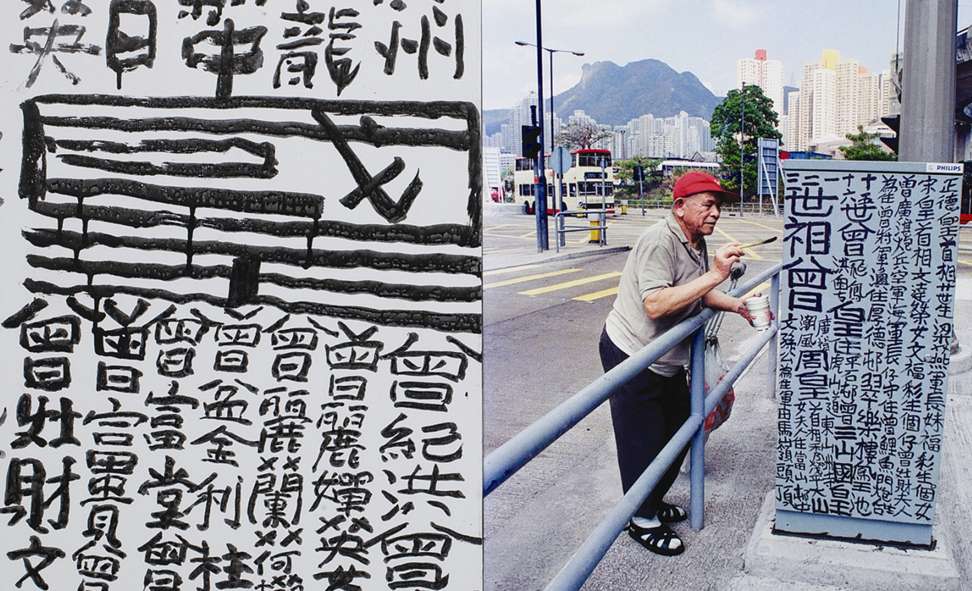
Officials seek remedies after contractor painted over ‘King of Kowloon’ Tsang Tsou-choi’s decades-old art
Leisure and Cultural Services Department says contractor mistakenly defaced graffiti, adding that electric switch box involved was not part of playground renovation
Two government departments were seeking remedies on Wednesday night after a contractor mistakenly painted over a key piece of late “King of Kowloon” Tsang Tsou-choi’s black ink graffiti in Kwun Tong.
Tsang created the street art on an electric switch box near Sam Shan Kwok Wong Temple next to Kwun Tong Road children’s playground more than 25 years ago. Earlier this week, it was found covered in white paint.
A notice from the Leisure and Cultural Services Department, which manages the park, said the playground was undergoing improvement work from March 22 to May 13. Buckets of paint were seen near the switch box.
“It is understood that the contractor mistakenly covered the calligraphy on the electric box with paint. The Architectural Services Department has already followed up on it in accordance with the contract,” the Leisure and Cultural Services Department told the Post on Wednesday evening.

It also said the park improvement project, which it handed to the Architectural Services Department, did not cover the electric box.
The type of paint that was used cannot be undone, which means the graffiti is lost forever
It said the two departments would study remedial measures, adding it would strengthen communication with relevant works departments so they could remind contractors or agents not to paint over or remove Tsang’s works.
Earlier, archivist Joel Chung Yin-chai, who owns the biggest collection of Tsang’s work, expressed shock over the incident.
“The type of paint that was used cannot be undone, which means the graffiti is lost forever,” he told the Post. “What a birthday gift to the people of Hong Kong and the global art sector given that this year marks the 10th anniversary of Tsang’s death.”
Chung said the government had decided to protect Tsang’s remaining roadside graffiti about 10 years ago, but the decision was not rigorously enforced.
He said he had become numb to what the government had done over the years to Tsang’s calligraphy.
The sudden disappearance of the calligraphy also upset former radio host Henry Chan Wan-hoi.
“I want to tell everyone the calligraphy that had been preserved for decades on the switch box on Kwun Tong Road has been washed off by white paint ... It was all destroyed,” Chan said in a Facebook post.
He added that filing a complaint would not help because the damage was irreversible.
The so-called “King of Kowloon” was born in Guangdong in 1921 and started drawing graffiti in the 1950s. He was regarded as a pioneer of local street art.
The toothless, shirtless graffiti specialist hobbled around the city on crutches clutching a dingy plastic bag of brushes and ink, writing on walls, lamp posts, electrical switch boxes, post boxes or any available surface in Kowloon and on Hong Kong Island between the 1950s and the early 2000s.
Tsang’s graffiti was featured in 2015 in the debut project of the Google virtual museum, with the launch drawing support from chief executive-elect Carrie Lam Cheng Yuet-ngor, who was then chief secretary.


